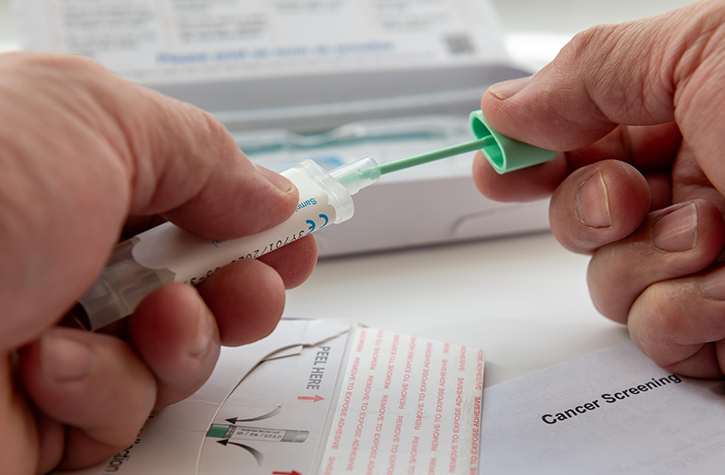April 19, 2024
A new Kaiser Permanente study shows a gradual shift over time has occurred in the way emergency department physicians evaluate and diagnose sudden, severe headaches.

Dustin Mark, MD
“We were aware that more doctors across the country were starting to move away from recommending a lumbar puncture after an initial CT scan and were using CT cerebral angiograms instead,” said lead author Dustin G. Mark, MD, an adjunct investigator with the Kaiser Permanente Division of Research and an emergency medicine physician with The Permanente Medical Group. “We suspected the shift was happening within our own emergency departments and we wanted to get a sense of how big a change was taking place.”
The research, published in JAMA Network Open, is the first to look at recent changes in the use of headache diagnostic tests over time. The study included 198,109 patients treated at a Kaiser Permanente Northern California emergency department between 2015 and 2021 for a severe headache. None of the patients had previously been diagnosed with any type of bleeding in the brain.
The research team found that over the 6-year study period, the use of computed tomography (CT) cerebral angiography as a second test increased by 18.8% a year, while the use of lumbar puncture as a second test decreased by 11.1% a year.

Mary Reed, DrPH
“Kaiser Permanente Northern California is in a unique position to examine this trend over time and to look at the impact it is having on our patients and our health care system,” said senior author Mary E. Reed, DrPH, a research scientist at the Division of Research. “Our study confirms what many physicians believed was happening and provides important information health systems can use going forward.”
A brain aneurysm is a ballooning that occurs in a weakened area of a blood vessel in or around the brain. If an aneurysm bursts, it can trigger a subarachnoid hemorrhage — bleeding between the thin layers that protect the brain that can be potentially debilitating or life-threatening. The hemorrhage typically causes what’s known as a thunderclap headache: an intense, throbbing pain that people describe as the worst headache they have ever experienced. Any time a patient comes to the emergency department with a horrendous headache, physicians must rule out a bleeding brain aneurysm.
“Emergency physicians know that CT scans don’t always find the bleeding, especially if it’s been more than a day since the aneurysm burst and the pain developed,” said Dr. Mark. “We spent decades recommending patients have a lumbar puncture so we could look for blood in their spinal fluid. But we came to realize it might make more sense to just cut to the chase and look more closely at the brain for what may have caused the bleeding, and we can do that with a CT cerebral angiogram.”
A CT cerebral angiography uses a contrast agent injected into the bloodstream followed by CT imaging to examine the blood vessels and blood flow in and around the brain. One concern about using CT cerebral angiography instead of lumbar puncture is that very small aneurysms are difficult to see on CT. The study did not find that the increased use of CT cerebral angiography leads to a significant change in missed diagnoses of subarachnoid hemorrhage. But it did find a 33% increase in the number of unruptured intracranial aneurysms detected.
A lumbar puncture, also known as a spinal tap, is a procedure that involves inserting a needle between the vertebrae to remove a sample of cerebrospinal fluid. It has a high rate of false positive results and can cause a severe long-lasting headache. But it can find bacterial meningitis, which can also cause severe headaches. There was concern that increased use of CT cerebral angiography might lead to missed diagnoses of bacterial meningitis. But the study found that was not the case.
Dr. Mark said future studies are needed to learn more about the consequences of finding more unruptured aneurysms and to determine the best way to follow people who have them. He also noted that it would be important for researchers to track whether the ease of doing a CT cerebral angiography leads more doctors to recommend the test even in cases where they would not have considered a lumbar puncture.
“The organic changes our study found happening in our emergency departments are representative of what is happening throughout the country,” said Dr. Mark. “This is the first study to not only document this is happening, but also quantify the extent to which it is happening.”
Co-authors include Brandon H. Horton, MPH, of the Division of Research.
The study was funded by The Permanente Medical Group Rapid Analytics Unit Program.
This article originally appeared on Division of Research Spotlight.






